Microphone Capsules
Modular “Colette” microphones consist of the combination of two basic units as shown – a microphone capsule and amplifier.
The number of possible combinations is quite large – there are 20 types of microphone capsule and 6 basic types of amplifier. With very few exceptions, any type of capsule can be used with any type of amplifier
Omnis
MK 2 / MK 2 H / MK2S / MK3

Omnidirectional microphones - if constructed as single-diaphragm transducers, as all SCHOEPS omnidirectional microphones and capsules are - can be considered optimal due to their excellent reproduction of low frequencies and extremely low noise (with SCHOEPS as low as 11 dB(A)). The various types differ in the extent of their high-frequency response elevation, which compensates for the high-frequency losses in the diffuse sound field. Thus we offer both “free field equalized” and “diffuse field equalized” transducers as well as two in-between types.
לרשימת הדגמים המלאה לחץ כאן
Cardioids
MK4 / MK4V
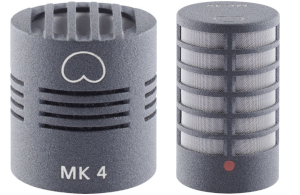
The cardioid is the most popular type of directional microphone. It combines the highest level of audio quality with optimal suppression of rear-incident sound. SCHOEPS cardioids have a directional pattern that remains the same at all frequencies.
The range of applications for cardioids is unlimited. They are used for speaking voices as well as for instruments and vocal soloists.
לרשימת הדגמים המלאה לחץ כאן
Wide Cardioids
MK21 / MK21H
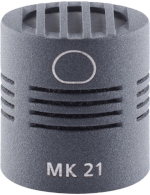
SCHOEPS introduced the world’s first wide cardioid microphones and capsules some twenty years ago. This pattern combines the advantages of omnidirectional and cardioid characteristics in an optimal manner. To an extraordinary extent the directionality is independent of frequency, which means that regardless of its direction of origin, sound will be picked up free of unwanted coloration.
The wide cardioid is very well liked as a musical instrument microphone. Its sound quality, compared with that of a cardioid, is “warmer” and more “open.”
לרשימת הדגמים המלאה לחץ כאן
Open Cardioid MK 22

new kind of directional pattern: “Open Cardioid”
optimal combination of classic cardioid directionality (MK 4) with the sonic character of the wide cardioid (MK 21)
directional pattern largely constant throughout the frequency range
often preferred for spot miking and as a soloist’s microphone
Supercardioids
MK 41 / MK41V
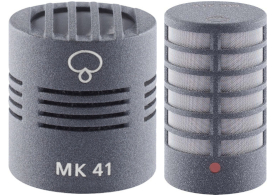
The supercardioid has the greatest directional effect of any first-order pressure gradient transducer. The response 90° off-axis is -10 dB. The polar diagram is consistent at all frequencies, which means that regardless of its direction of origin, sound will be picked up free of unwanted coloration. For this reason the supercardioid is the preferred type of microphone for dialog recording in film and video sound, particularly indoors.
From low to midrange frequencies, the directionality of a supercardioid is comparable to that of a “shotgun” microphone.
לרשימת הדגמים המלאה לחץ כאן
Figure-eight MK 8

pure pressure-gradient transducer
figure-8 pattern with near-ideal consistency across the frequency range
side-addressed (pickup perpendicular to the microphone body)
optimal for use in M/S and Blumlein stereo recording
Switchable MK5
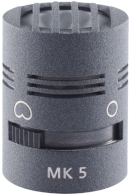
omni and cardioid patterns, mechanically switchable
slight emphasis of the high frequencies
broad range of applications
preferred uses similar to those of the MK 2 or MK 2S and the MK 4:
in the cardioid setting: for use with singing or speaking voices or most instruments, as a spot microphone, and for stereo recording with coincident, ORTF or M/S microphone arrangements
in the omni setting: for recording instruments, singers, etc. at relatively close range
Close Pickup - The P series
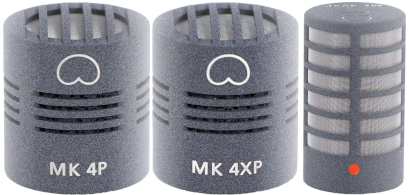

SCHOEPS offers special directional microphones and capsules for close pickup. Their reduction in low-frequency response compensates for proximity effect and helps to suppress both "popping" and ambient noise. Thus, P-series microphones can deliver broadcast quality even in loud arenas.
The microphones of the P series have a "P" in the product name. P means "proximity" and the corresponding low frequency attenuation. "XP" means a particularly strong low frequency attenuation. They are designed for close placement - "P"-types shouldn't be used at a distance of more than 20 cm, "XP"-types even closer than 10 cm.
The speech intelligibility is drastically enhanced by the compensation of the proximity effect as done in the P-series capsules. They are often used in fixed installations, or in the SCHOEPS HSC 4VP/4VXP headset.
Boundary Layer Microphones
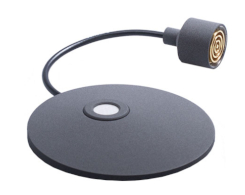
Boundary layer microphones have remarkably uniform frequency response for all angles of sound incidence. This provides an especially natural-sounding reproduction of room sound. Additionally, the boundary layer effect offers an increase in sensitivity.
לרשימת הדגמים המלאה לחץ כאן
Special Microphones
Standard cardioid or supercardioid capsules can be used in conjunction with the CUT 1 filter (for Colette-series microphones) or the LC 60 or LC 120 in-line filters (for Colette-series or CCM-series microphones).
לרשימת הדגמים המלאה לחץ כאן
Analogue Microphone Amplifiers

In addition to the standard, phantom-powered CMC 6 amplifier type, SCHOEPS offers a vacuum-tube amplifier and special types for battery-powered operation and for use with pocket transmitters.
לרשימת הדגמים המלאה לחץ כאן
ניתן לרכוש ממגוון מעמדי ומתקני המיקרופון היעודיים
ניתן להתרשם מדגימות הקול בשלל מצבי הקלטה בטכניקות הקלטה שונות
באמצעות אולם התצוגה האינטרנטי החדש המציג את מגוון מיקרופוני Schoeps במצבי הקלטה שונים
